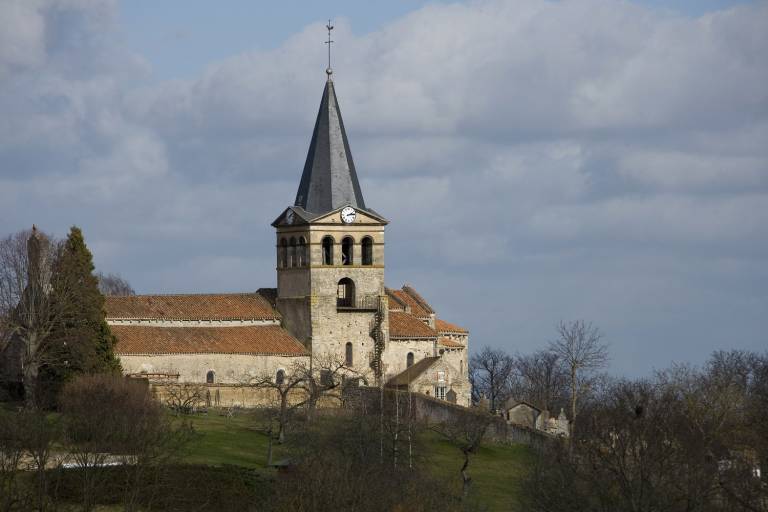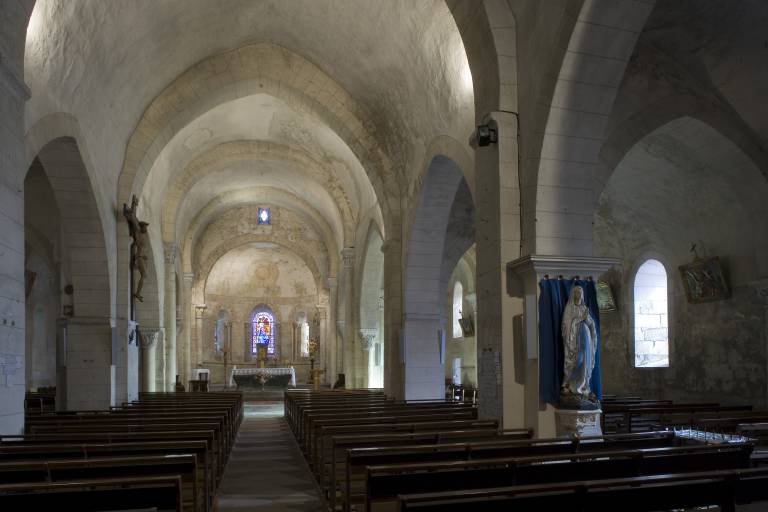Saint-Mazeran Church


Description
The parish church of Saint-Mazeran dates from the 11th-12th centuries.
It has been listed in the inventory of historical monuments since 1933.
It is part of the European Federation of Cluniac Sites and of the Association of the Route of Painted Churches.
Architecture of the bedside dating from the 11th and 12th centuries, wall painting dating from the 16th century, paintings from the Second Empire, and the Merovingian sarcophagus presumed to be of the Patron Saint, Saint-Mazeran, await visitors. A Merovingian cemetery, was discovered in 2015, in front of the church.
The parish church (ISMH) of the 11th-12th century, in the Auvergne Romanesque style, is the work of a family: the Majoran who were once lords of Schools and the Region. In the second half of the 10th century, Théobald Majoran, better known under the name of Saint-Mazeran, (illustration: painted wall of the church of the saint with its square and a plumb line), entered into religion and began the construction of 'a priory.
According to legend, the saint himself drew up the plans for the first chapel around 1070 which was to be attached to the Benedictine priory of Souvigny around 1095, then to Cluny.
12th century Development:
After 1160, the priory church will be enlarged to become a parish in 1168.
The 18th century and the French revolution:
The main Altar in gray marble dates from 1765. This Altar survived the Revolution without damage, while the church was closed to worship for 10 years (in 1796 it was sold as national property).
Period during which it served as a workshop and barn meeting room.
It was at this time that the bell tower was knocked down.
Nineteenth century:
The upper part of the bell tower will be rebuilt around 1830.
In 1842, a first bell was installed, a second in 1866.
Pricing
Free access.
Additional information
Languages spoken
Facilities
Pet
Pet allowed
Pet not allowed
